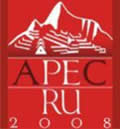United Kingdom
| Welcome |
| Peru in Brief |
| History |
| Geography |
| Government & Politics |
| Maritime delimitation between Peru and Chile |
| News |
Links |
| HUANCAVELICA | |||
 |
|||
| Vilca Waterfalls | |||
| Capital: | Huancavelica | ||
| Elevation: |
3780 m | ||
| Climate: |
Varying according to altitude: cold on the high plateaus, mild at intermediate altitudes and hot in the low-lying valleys. |
||
| History: |
Huancavelica takes its name from Huanca Huilica , Quechua for "idol of stone". A major source of minerals since pre-colonial times as attested by the obsidian, silver and other objects found in the area, Huancavelica was home to the Huarpa culture between 200 and 700 A.D. In the 12th century the region was taken over by the Wari, whose polity subsequently broke down and was replaced by the Coras , whom the Incas conquered in turn. |
||
As from 1566, the area attracted the Spaniards' attention for its wealth in silver and mercury - so much so that, in disposing the foundation of the regional capital. Viceroy Toledo opted for the emblematic name of Villa Rica de Oropesa. Harsh working conditions in the mines led to frequent revolts among the Indian labourers, however |
|||
| Places of Interest: | The Mantaro and Pampas valleys provide good hunting and fish. |
||
| <BACK> | |||





